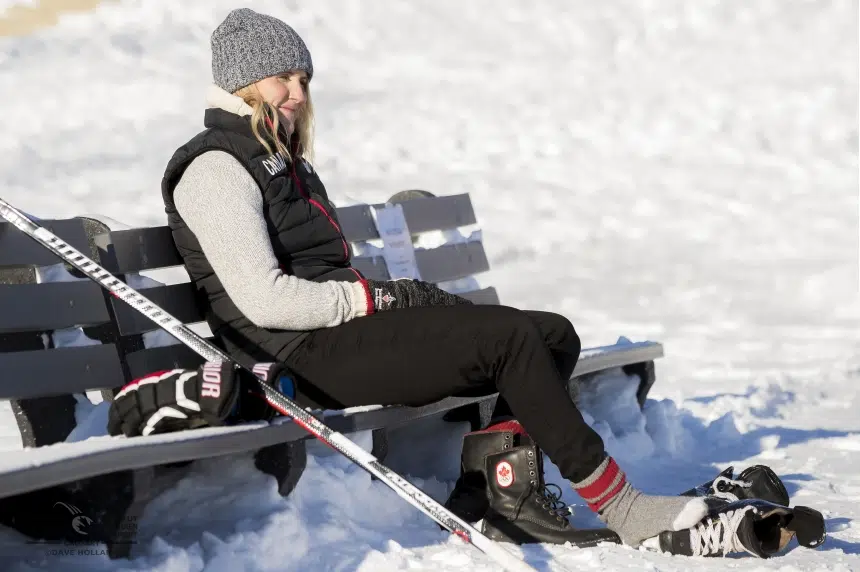Young or old, player or coach, when asking women involved in hockey about their heroes in the sport, one name comes up more than any other – Hayley Wickenheiser.
So it’s fitting that Wickenheiser, the woman who all would agree has been the face of women’s hockey for over 20 years, was inducted into the Hockey Hall of Fame on Monday night.
In her induction speech, Wickenheiser told stories about being the only girl on the team for most of her life, developing an ulcer from having to deal with the harassment of the parents who didn’t want her on the team, and having to fight for every inch she got in hockey.
While the hockey experience for University of Saskatchewan Huskies captain Brooklyn Haubrich wasn’t as negative as Wickenheiser’s, there were still similarities that both had to deal with.
“I read that and I kind of laughed because that was not the experience that I had but I also was reading that she cut her hair to fit in and that is definitely something that I did,” said Haubrich.
“Sometimes on the ice the guys would go easy on you because you were a girl, so I did my best to fit in the best way possible so no one was going easy on me, and she also goes on to say that she loved the hitting and that made her better and gave her a thick skin and resilience and I totally relate to that.”
One coach in the Comets girls hockey program in Saskatoon, Robyn Ayers, had very similar experiences as Wickenheiser when she was growing up.
“I remember I got cut probably in atom and they said you’ll never go anywhere, these boys have the chance to make the NHL,” she said.
“It wasn’t even about who was better, it was just about where are you going to go as a female hockey player because there was no Olympics or anything, there was no university.”
Ayers said that some of that stigma around girls playing with men is still prevalent today, although it is getting better.
“I still play hockey today and I play in a men’s league and they don’t want to get beat by a girl, and they are men. It’s old school. They’ll try harder, they’ll back-check harder,” she said.
“My son’s team, they get all rattled if they lose to an all girls team. And I’m always rooting for them to lose, I want the girls to beat them because we’ve come a long way, but it’s still really around the rink lots.”
But when it comes to young female hockey players like the ones on Ayers’ team, she said they aren’t facing any complaints when they make a boys team, like girls in the past would. Some people are even calling it co-ed hockey instead of boys and girls hockey.
The growth of the women’s game hasn’t just been the inclusiveness and acceptance of girls playing with the boys but also in the numbers of girls playing.
According to the Saskatchewan Hockey Association, since having just 878 female players and only 59 teams in the province in 1996, the women’s game has grown to over 2,500 players and 185 teams this year.
Haubrich has seen the effects of this growth just in her five years of playing on the Huskies. She said five years ago it was common for most of her teammates to have grown up only playing boys hockey but now more and more are coming from girls hockey.
“I’m in my fifth year and the rookies coming in now, they all were able to play girls hockey,” she said.
“A lot of them do come from cities and I think it’s a small town thing to not have access, or the numbers to form a female team. But I would say there is a lot more girls coming in now that never played boys hockey, where five years ago almost our whole team would have played with boys.”
No matter who you ask about this growth, Hayley Wickenheiser is always one of the reasons given for how far female hockey has come.
“I think she honestly had the opportunity to drive women’s hockey and she totally took it and she totally succeeded with it. I really think that where women’s hockey is today has a lot to do with her,” said Haubrich.
“I think the trials and tribulations she went through eventually helped the next generation of women’s hockey to be where it is today. You don’t have to be the only girl on the team dressing in the bathroom because there are more girls interested. Even today watching her go through medical school it is inspiring to see she did all of that on the ice and now she is succeeding in the classroom. I think she is such a great role model for all female athletes.”







